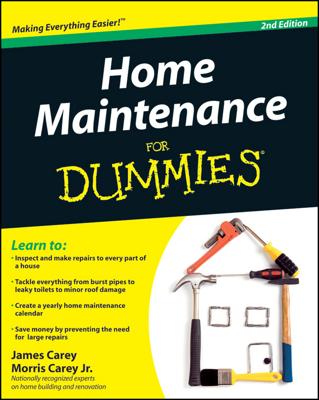Small electric power-washers (or pressure-washers, as they're also called) sell for as little as $150. Gutsy gas models cost two to four times as much. You can also rent a killer unit for about $65 a day. If you rent, you may want to share the rental cost with a neighbor — cleaning the exterior of two houses in a day is entirely possible.
In addition to the many commercial cleaners available, you can make two widely recommended homemade cleaning solutions:
-
For general cleaning, mix 1/2 cup laundry detergent or trisodium phosphate (TSP) in 1 gallon water. Scrub with a stiff brush and rinse thoroughly with water.
-
To remove mold, mildew, algae, and lichen, mix 1 quart household bleach and 2 ounces TSP detergent, or a phosphate-free substitute, with 3 quarts water. Spray on with a garden sprayer. If necessary, cover the area for about an hour to prevent it from drying out. Rinse well with water and repeat as necessary.
Power-washers usually have a control to vary the pressure of the water stream. For most cleaning projects, especially on wood, 800 to 1000 psi (pounds per square inch) is adequate. On less vulnerable surfaces, you can go up to a maximum of 1,500 psi. Read the power-washer's operating instructions or request a demonstration of a rental unit.
The jet of water spraying from a power-washer can be lethal. Exercise good judgment when using a power-washer, and most important, never use it around other people or pets. If you're on a ladder, keep one hand on the ladder and be prepared for the considerable kick that occurs when you pull or release the trigger.
Depending on the application, some products may be used with power-washers that meter chemicals into the water stream from a detergent bottle or through a siphon hose. Be sure to read the label. Many solutions contain chemicals that can damage the washer and/or put your health at risk when used with a power-washer.High-pressure water finds its way into any unsealed opening in its path, so make sure to protect everything you don't want to spray. No matter what you're washing — siding or deck — follow these basic guidelines:
-
Wear rain gear, boots, and safety goggles.
-
Use drop cloths or large sheets of cardboard to catch paint chips.
-
Test pressure adjustment, spray pattern, and working distance on an inconspicuous area.
-
Practice your spray angle by holding the sprayer to the surface until you get the even results you want. Overlap passes for even cleaning.
-
Don't swing the wand in an arc; you'll get uneven results because you're closer to the surface in the center of the arc.

